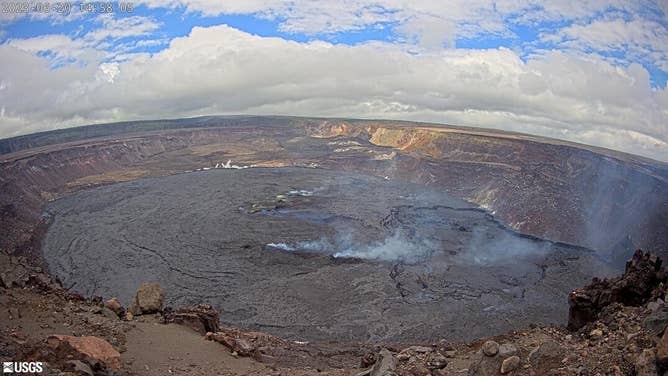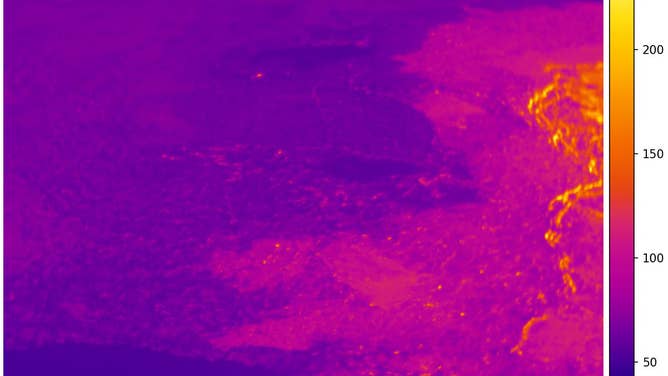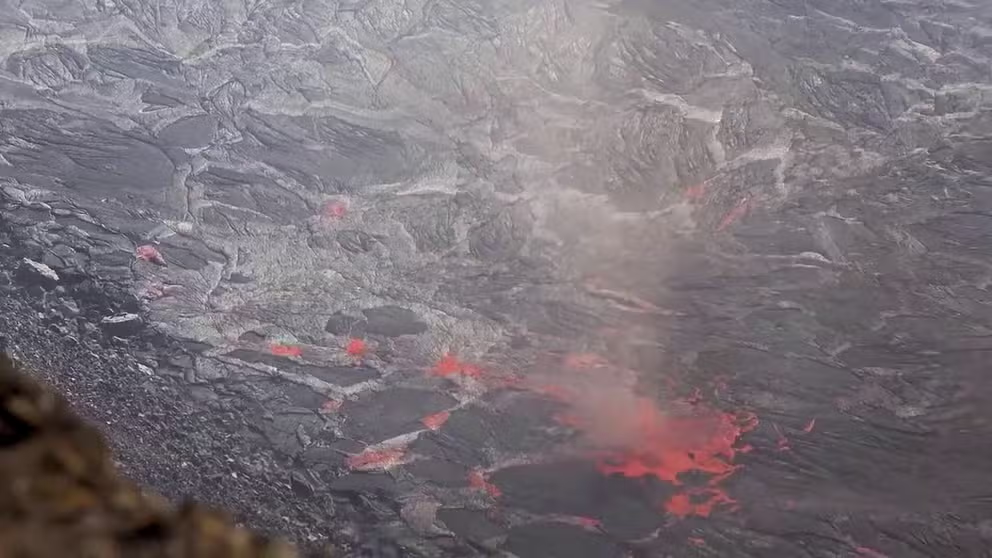Kilauea’s summit eruption pauses after decline in lava
Kīlauea is one of the most active volcanoes on Earth. The current eruption cyclone began on September 29, 2021, and has been off and on ever since. The volcano is over 100 miles from Honolulu. An eruption in 2018 destroyed over 700 homes and caused hundreds of millions of dollars in damage.
Tourists and locals flock to Hawaii's Kilauea volcanic eruption
Hawaii's Kilauea volcano has erupted for the second time this year. The eruption has brought tourists and locals to the site to catch a glimpse of the eruption.
HONOLULU – Hawaii’s most active volcano appears to have taken a respite after nearly two weeks of producing lava fountains and streams on the Big Island.
The Hawaiian Volcano Observatory reports Kīlauea’s lava activity started winding down on Monday after being active since June 8.
The active volcano is still under an Orange/Watch, which are the second-highest levels on the activity scale.
WATCH AS HOT, RAPIDLY-RISING AIR SWIRLS LAVA INSIDE HAWAII’S KILAUEA VOLCANO
Volcanologists warn activity could resume at any time, but recent events have been contained with Hawai’i Volcanoes National Park and caused minimal disruptions.
The HVO warned some lava continues to flow and will likely cool over the next few days.
Mauna Loa and Kīlauea put on a spectacular display in December 2021 as both volcanoes simultaneously erupted.
The last significant eruption was in 2018, when more than 700 homes were destroyed, but there were no reported fatalities.
OFFICIALS WARN HAWAII’S KILAUEA VOLCANO COULD RESUME ERUPTING AT ANY TIME
WATCH: Wind vortex tries to suck up lava from inside Hawaii's Kilauea Volcano
Stunning new video released by the USGS shows areas of hot, rapidly swirling air grabbing fresh lava spewing from Hawaii’s Kilauea Volcano and tossing it into the air.
How to monitor the volcano
The USGS has a series of webcams located around Kīlauea, which assist experts in determining when an eruption could be underway and when lava starts to flow.
Cameras are operational 24/7, and some can provide spectacular views, especially in areas where there are increased dangers.
View the Halemaʻumaʻu pit webcam here.

View of Hawaii’s Kīlauea Volcano on 6/20/2023
(USGS / FOX Weather)
During nightfall or cloudy conditions, it may be difficult to see the site. Scientists have thermal webcams that they can use to view sources of heat.
Images are usually colorful and can give experts a sense of where gas and lava flows are when visibilities are poor.
View the thermal camera of the Kīlauea summit here.

View of Hawaii’s Kīlauea Volcano on 6/20/2023
(USGS / FOX Weather)
If you are fortunate enough to be on the Big Island when an eruption happens, there will likely be serval spots to view the event from a safe distance.
Volcano experts suggest checking out Hawaii Volcanoes National Park for observation sites. The over 500 square mile park is open 24 hours a day, and there are several designated areas to view the volcano.
The National Park Service Mobile app or a local ranger can guide you to a prime viewing location

